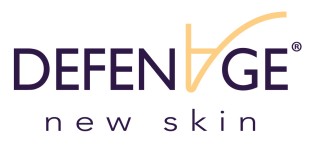
Body Contouring
Body contouring (also known as "body sculpting" or "body shaping") is an umbrella term for various techniques for reducing fat or tightening skin in specific body areas where standard methods of weight loss and muscle toning have not been effective.
Contents:
Why Is Body Contouring Used?
While it isn't a substitute for weight loss, body contouring often works alongside weight loss efforts to reshape difficult areas aesthetically. For those having trouble reducing fat in certain areas (or those who have lost considerable amounts of weight but now have extra skin), body contouring can be an effective way to reshape those areas for both cosmetic and health reasons.
Different Types Of Body Contouring
There are many different types of body contouring available to patients, both surgical and non-surgical.
Cryolipolysis
Cryolipolysis is a non-surgical body sculpting procedure that applies low temperatures to areas of the body with visible fat bulges. By exposing these areas to temperatures lower than body heat (but not below freezing) for limited periods, doctors can force the underlying fat deposits into "localized cell death" without harming the skin above it. After treatment, the body gradually processes this fatty tissue, reducing the appearance of fat bulges over several months.
Injection Lipolysis
Injection lipolysis is a non-surgical body sculpting procedure that involves injecting deoxycholic acid into subdermal fat deposits. This chemical causes fat cells to "lyse" (self-terminate). When used in the submental area (the area beneath the skin), lipolysis injections can be an effective method of reducing the appearance of a "double chin."
Laser Lipolysis
Laser lipolysis works by targeting fatty areas with a laser beam while simultaneously cooling the skin above. This treatment breaks down fat cells with heat without damaging the overlying skin. The results of laser lipolysis are usually long-lasting, provided the patient doesn't gain a high amount of weight afterward. Treatment can be accomplished in less than half an hour, with maximum results in one to three months.
Radiofrequency Lipolysis
With ultrasonic waves, specialists can target fat cells, forcing them to vibrate. These physical vibrations break clusters of fat cells apart from each other and unstick them from surrounding tissues. The immune system then gathers up the removed fat and eliminates it as waste.
Red Light Therapy
Using specialized lamps that emit low-frequency light, a specialist will shine red and infrared light on the skin above an area with excess fat. The light penetrates the skin and activates fat cells to open up and release some of their contents. This causes the fat cells to shrink in size, which gradually reduces the appearance of fat bulges over time.
Micro-Focused Ultrasound
Micro-focused ultrasound gently heats the deeper tissues of the face to promote the tightening of facial skin to reduce the appearance of wrinkles. The technique can also be used in other areas with loose skin. Most patients see results around six months after treatment.
Lifts and Tucks
Lifts and tucks are surgical options, where surgeons physically remove the excess fat from the body and simultaneously remove the extra skin covering it for a tighter, healthier look. Facelifts, tummy tucks, double chin surgeries, and breast lifts are all examples of these procedures.
Liposuction
Liposuction is the surgical body contouring method that most patients have likely heard of. Simply put, a surgeon will inject a problem area with saline, anesthetics, and epinephrine. This preps the site, loosens fat, and restricts blood flow to the area. Then, the surgeon will make a small incision through which a hollow tube called a cannula will be inserted. The surgeon then connects the cannula to a vacuum, suctioning out the fat from the area. This might be a viable option for patients with normal body weight but stubborn areas of fat that otherwise don't react to a healthy diet and exercise.
Benefits of Body Contouring
It may feel easy to dismiss body contouring as something vain. But in patients who need it, there are more benefits beyond the cosmetic. Removing loose skin and excess fat deposits (especially those that don't respond to other means) can significantly increase a patient's comfort and reduce pain.
Additionally, body contouring can provide more effective and longer-lasting results than many patients can achieve on their own. With various safe techniques to choose from, body contouring allows patients with stubborn fat or loose skin to find the relief they've been looking for.
Risks & Complications of Surgery
Where possible, patients should treat surgical body contouring methods as a last resort. While the majority of surgeries only produce mild, short-term side effects, there is a possibility of major complications from more invasive body contouring procedures. In particular, liposuction, lifts, and tucks can expose patients to risks such as anesthesia complications, infections, blood clots, and damage to various internal organs. While these risks are not typical, it's usually advisable for patients to opt for non-surgical options first unless otherwise instructed by their doctor.
What Is The Recovery Time from Body Contouring?
Recovery time depends on the method of body contouring used. Generally, non-surgical options have much quicker recovery times after each treatment. Cryolipolysis, injection, laser, and radiofrequency lipolysis methods (as well as micro-focused ultrasound) usually require little to no downtime. Patients can generally expect to get right back to normal activities following each treatment.
Surgical methods will have longer recovery times. Since they are more complex procedures involving anesthesia, patients receiving lifts, tucks, or liposuction will usually need to rest for the remaining part of the day after surgery. Many can resume going to work the day after the procedure. Still, they should avoid heavy lifting or strenuous exercises for a minimum of six weeks following the operation as the body heals.
When To See A Doctor
Nonsurgical options are usually very low risk, so complications aren't a major concern
After surgical procedures, patients should monitor their symptoms and contact a health care professional immediately if they notice signs of infection or surgical complications.
Signs to watch out for include:
- Dizziness
- Chest pains
- Nausea or vomiting
- Fevers over 100.5°F (38°C)
- Bleeding, pus, or drainage at the site of the incision
- Swelling or redness at the site of the incision
- High levels of pain that don't respond to prescribed medicine
Conclusion
There are a variety of methods available to help patients remove the excess fat or loose skin that prevents them from living their best life. Non-surgical body contouring methods are very low risk and can help patients sculpt their bodies for better comfort, less pain, and increased confidence. Though more invasive, surgical techniques can also be an effective choice for contouring problem areas of the body.


